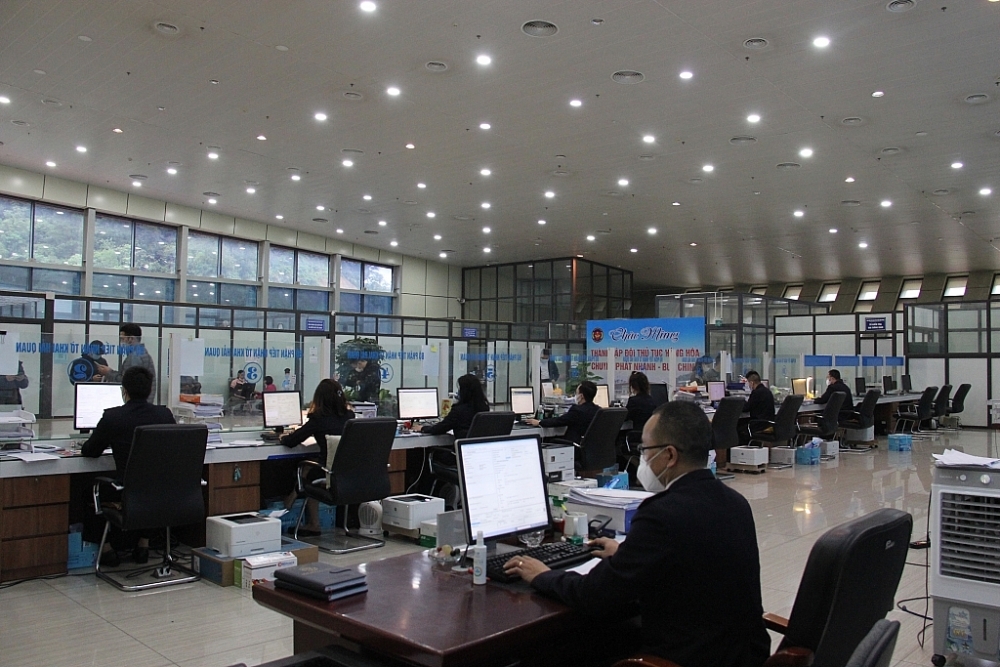VCN – To achieve the goal of cutting and simplifying customs procedures and procedures in the digital environment to facilitate businesses, policies on customs procedures, inspection and supervision will be revised as a basis for implementation.
 |
|
Officers of Huu Nghi Customs Branch at work. Photo: H.Nu |
According to Director of Customs Control and Supervision Department Au Anh Tuan, the Customs sector will focus on key tasks in 2022 such as accelerating the implementation of digital customs and smart customs and the Customs Modernization and Reform Strategy for 2021-2030.
The Customs authority will complete the legal basis to create a premise for implementing Digital and Smart Customs.
Specifically, the Department will continue to coordinate with units to finalize a number of legal documents as the basis for implementing customs modernization and reform.
In addition, the Department continues to complete the draft Decree and implement the Decree to renew the model of quality inspection and food safety inspection for imports under the Government Decision 38/QD-TTg when it is issued. According to the Director, these solutions will help cut and simplify procedures of customs, specialized inspection and import and export in a digital environment, facilitating businesses.
To execute the model of digital and smart customs, the Customs sector will review and perfect professional problems on smart customs as a premise for bidding, building and implementing a new system at the end of 2022 and early 2023.
In addition, the customs will improve the current customs procedures in the direction of approaching the digital and smart customs model such as requirements for implementation of procedures to automatically monitor goods at seaports, airports and land border gates.
Facing the booming demand for e-commerce goods in the current period, the General Department of Vietnam Customs also researches solutions to facilitate customs clearance such as building a system to handle problems and shortcomings for goods via e-commerce.
In addition, the Customs will invest in upgrading the customs system at the border gate areas to effectively control and facilitate businesses such as identification camera system, electronic barriers for cargo supervision at seaports; installing modern monitoring equipment, including scales, human-mounted cameras, container scanners, seals for monitoring at border gates, seaports and warehouses, Director Au Anh Tuan said.
In the 2021-2025 plan, the Customs authority will continue to coordinate with ministries and government agencies on reviewing legal documents related to specialized inspection of imports and exports to propose the Government to amend and supplement in the direction that one law will amend many laws, and the Customs office will be the focal point at the border gate to carry out inspections of import and export goods, including specialized inspection.
“This orientation is consistent with the development trend of Customs in some advanced countries such as the US, New Zealand, and China. This is an inevitable trend that Customs authorities will propose to senior authorities to submit to the Government to issue a mechanism to unify a focal point for inspection at border gates, reducing customs clearance while strengthening control and coordination among ministries and government agencies,” said Tuan.
|
In the recently issued Directive on the comprehensive and drastic implementation of measures to facilitate trade, improve the effectiveness of state management, and prevent revenue loss in revenue collection in 2022, the GDVC sets out key tasks such as perfecting the overall process of customs procedures, specialized operational processes, the model of smart customs and digital customs with a high level of automation, applying advanced technological achievements on a digital platform, ensuring compatibility, transparency, effectiveness, efficiency, predictability, and adaptability to fluctuations in international trade as well as management requirements of the Customs, towards building e-Government and digital government. The customs will mobilize resources on building a new information technology system, meeting international standards and requirements of smart administration, capable of integrating, connecting and sharing information with ministries and government agencies, and businesses via the National Single Window. At the same time, Customs implements Decision 38/QD-TTg dated January 12, 2021 of the Prime Minister approving the Scheme on reforming the model of quality inspection and food safety inspection for imports. In addition, it reforms the control and specialized inspection for imports and exports. The customs will also research and propose amendments and supplements to regulations on management and specialized inspection of imports and exports in the Law on specialized management and inspection in the direction of appropriately reducing the list of goods in group 2; fully apply the principles of risk management based on the legal compliance of the enterprise and the risk level of the goods; change the management method from inspecting each consignment to inspection by item (except for goods subject to quarantine and plant varieties). |
By Ngoc Linh/Ngoc Loan
